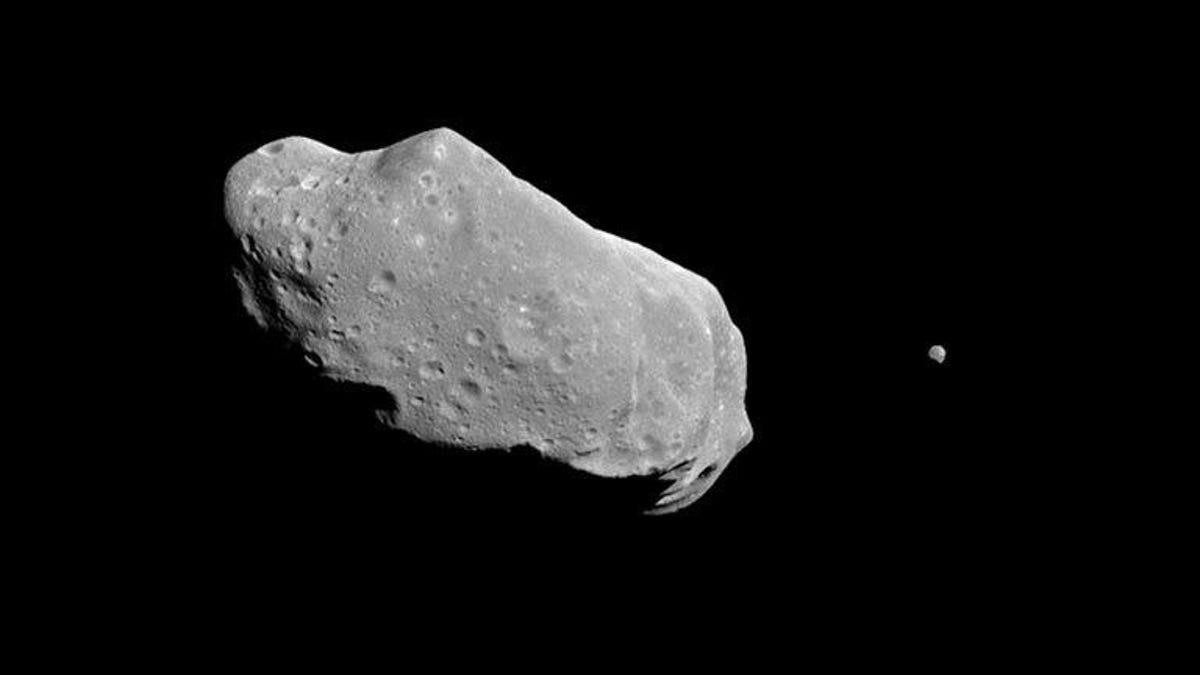Potentially hazardous asteroid spotted passing Earth with its own tiny moon
Sometimes good things come in pairs, and sometimes menacing space rocks do too.

An illustration of a binary asteroid system.
Astronomers say an asteroid the size of the Empire State Building that flew by our planet earlier this month had a sidekick.
Radar images from the Arecibo Observatory in Puerto Rico showed that asteroid 2020 BX12 is actually a binary system. In other words, the big space rock is carrying around a smaller asteroid 70 meters (230 feet) in diameter that orbits it like a tiny moon.
With a diameter of up to 450 meters (1,476 feet) according to NASA data, the larger of the two asteroids qualifies the system to fit the definition of a potentially hazardous asteroid, which is based solely on its size and vicinity to Earth. It does not, however, mean that 2020 BX12 actually presents a potential hazard to humans anytime soon. In fact, it already passed by us on Feb. 3 at a distance more than 11 times as far as the moon is from the Earth.
Range-Doppler radar images of binary near-Earth asteroid 2020 BX12.
Astronomers' calculations do show that 2020 BX12's orbit around the sun could one day bring it closer to Earth than the moon, but NASA data so far shows no chance of this occurring before the year 2200, and it doesn't appear that there would be any chance of impact.
So no need to worry about this big space rock and its partner -- or perhaps it's a smaller space rock accompanied by a big bodyguard?
One thing to ponder, though, is that this binary system was imaged when the Arecibo Observatory first came online following a month-long shutdown from earthquakes in Puerto Rico. It makes me wonder what other oddities might have been missed during those weeks offline.

